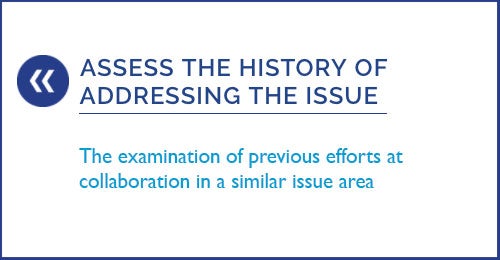Nov 29 2016 Diving Into The Intersector Toolkit: Assess the History of Addressing the Issue
 We recently updated our Toolkit for Intersector Collaboration to provide even more useful advice to practitioners involved in cross-sector collaborations. Each week we’ll be profiling one of our 17 tools, with a focus on resources that can help collaborations succeed.
We recently updated our Toolkit for Intersector Collaboration to provide even more useful advice to practitioners involved in cross-sector collaborations. Each week we’ll be profiling one of our 17 tools, with a focus on resources that can help collaborations succeed.
Taking a look to the past may save a collaboration time and resources as it seeks to shape the future. Assess the History of Addressing the Issue is the third tool in The Intersector Project Toolkit. Examining previous efforts of collaboration in a similar issue area — both successes and failures — can equip partners with valuable information to shape their own collaborative actions. By reviewing past efforts, partners can gain insights into how key structures, choices, practices, and processes may have influenced the effectiveness of those efforts.
Partners may examine how previous collaborations structured decision-making processes, established open channels of communication, shared information, evaluated their work, and more. When choosing past examples, partners may also wish to consider how contextual variables such as location, collaboration size, or project timeline are similar to or different from their own situation and what effect these may have had on the collaboration outcome. This review process can illuminate choices that may increase the collaboration’s likelihood of success and lower its risk of repeating past mistakes.
Several case study libraries serve as hubs of documented cross-sector collaborations across the United States:
- The Intersector Project Case Study Library
- The Collective Impact Forum (search media type: cases; free registration required)
- Kitchen Table Democracy (formerly Policy Consensus Initiative)
See Assess the History of Addressing the Issue in our Toolkit for further discussion on this topic, questions to guide tool use, and more
Explore the full Toolkit and each of the 17 tools with enhanced discussion, questions to guide tool use, and additional resources here.
